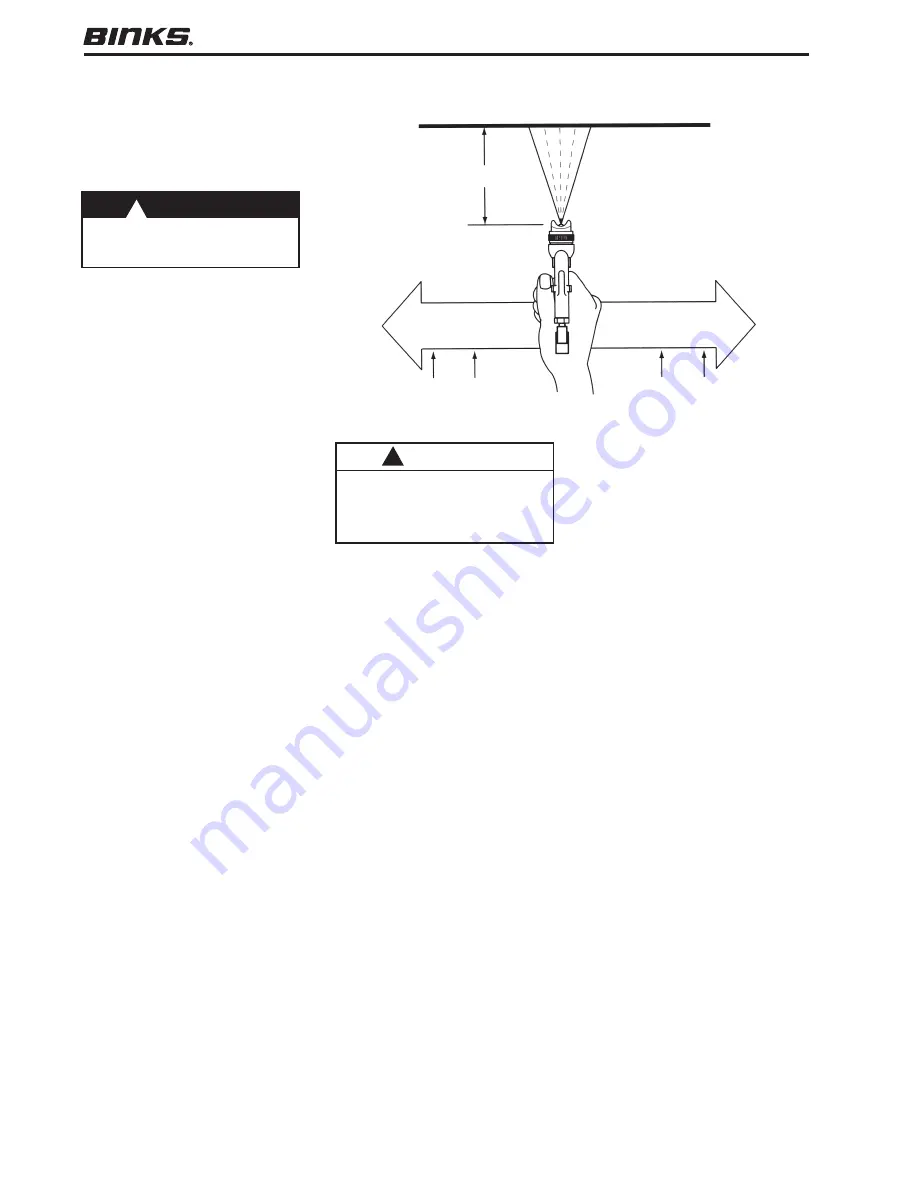
6
spray tecHnIQue for your Binks cub sl HVlp spray gun
spray tecHnIQue
To get a good finish you must handle
the gun properly. Hold the gun per-
pendicular to the surface you are
painting. Make each paint stroke par-
allel to the plane of the surface being
painted. Start the stroke before you
trigger the gun and release the trigger
before you end the stroke. This will
give you accurate control of both gun
and material and prevent excessive
build-up of material at the stroke ends.
The distance between the gun and
surface should be 6"-10" depending
on the material and the atomizing
pressure. The material deposited
should always be even and wet. Lap
each stroke about half of the preced-
ing stroke to obtain a uniform finish.
If you HaVe trouBle
wItH gun operatIon
or resultIng fInIsH
faulty spray pattern
A faulty spray pattern is often caused
by dried materials around the fluid
nozzle tip or in the air nozzle left
behind by improper cleaning. Soak
these parts in thinner to soften the
material and remove it with brush
or cloth.
IntermIttent spray
Fluttering spray is caused by one
of the following problems:
1. The nut that attaches the fluid cup
may be loose. The packing nut
(28) may be loose. The packing
(29) may be worn and need
replacement. The fluid nozzle (35)
may be loose.
2. Insufficient fluid available.
Refill the cup.
spIttIng
Spitting is caused by anything that
restricts the movement of the fluid
needle assembly (10). The probable
causes are:
1. The packing nut (28) is too tight.
2. The fluid needle (13) is bent. You
may be able to straighten it.
Otherwise, it must be replaced.
3. Dried material has built up on the
needle or in the fluid nozzle (35).
4. Lumps or impurities in the fluid.
Strain the fluid.
6"-10"
spray tecHnIQue
CauTion
never use anything metal to clean
the air nozzle. these parts are pre-
cisely machined, and any damage
to them will cause faulty spray
patterns.
!
Warning
always wear appropriate gloves, eye
protection and a respirator when
using your gun.
!
start
stroke
trigger
gun
end
stroke
release
trigger








